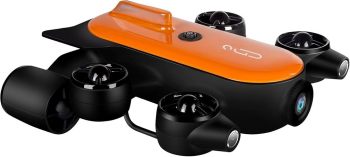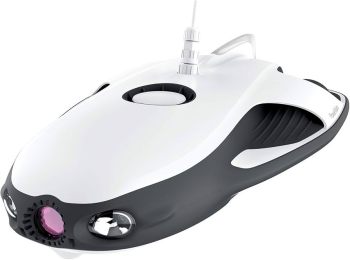- Deep diving capability.
- High-quality camera.
- Strong and durable construction.
- Advanced features for professional use.
- Affordable price.
- Good camera quality.
- Useful for fishing.
- Immersive VR experience.
- Expensive.
- Complex controls for beginners.
- Limited depth capability.
- Shorter battery life compared to higher-end models.
Geneinno Titan vs PowerVision PowerRay
The world of underwater exploration has witnessed significant advancements with the introduction of underwater drones, revolutionizing the way we discover and interact with marine life. Two prominent players in this field are the Geneinno Titan and the PowerVision PowerRay, both designed to capture stunning footage and provide an unparalleled underwater experience. In this comparison, we'll delve into the features, capabilities, and differences between these two innovative products.
Design and Build
The Geneinno Titan boasts a sturdy and compact design, measuring 12 inches in length and weighing approximately 8 pounds. Its durable construction allows it to withstand water pressure up to 150 meters (490 feet) deep. The PowerRay, on the other hand, has a sleek and streamlined body, stretching 13 inches in length and tipping the scales at around 7 pounds. It's designed to dive as deep as 98 feet (30 meters), making it suitable for shallower waters.
Camera Capabilities
Both underwater drones are equipped with high-quality cameras, but they differ in terms of resolution and field of view. The Geneinno Titan features a 12-megapixel camera with a 166-degree wide-angle lens, allowing for expansive and detailed footage. In contrast, the PowerVision PowerRay sports a 14-megapixel camera with a 100-degree field of view, providing slightly higher image quality but with a narrower perspective.
Propulsion and Maneuverability
The Geneinno Titan is powered by four thrusters, enabling it to move at a speed of up to 2 meters per second (4.5 mph). Its advanced stabilization system ensures smooth and stable footage, even in turbulent waters. The PowerRay, on the other hand, relies on three thrusters, reaching speeds of up to 1.5 meters per second (3.6 mph). While it may not be as fast as the Titan, its proprietary "Pathfinder" navigation system provides precise control and obstacle avoidance.
Autonomy and Control
Both underwater drones offer varying degrees of autonomy and control. The Geneinno Titan can operate for up to 4 hours on a single charge, with a maximum range of 500 meters (1640 feet) from the controller. It also features an automatic depth control system, allowing it to maintain a set distance from the seafloor or surface. The PowerRay has a shorter battery life of around 2 hours, but its "Follow Me" mode enables it to track and follow the operator, making it ideal for surfers, divers, or snorkelers.
Additional Features
The Geneinno Titan includes an integrated LED light for illuminating dark environments, as well as a built-in sensor suite for monitoring water temperature, pH levels, and other environmental factors. The PowerVision PowerRay, on the other hand, offers a range of accessories, including a fish finder attachment and a 4K-resolution camera module.
Conclusion
In conclusion, both the Geneinno Titan and the PowerVision PowerRay are exceptional underwater drones, each with their unique strengths and weaknesses. While the Titan excels in terms of depth capability, camera resolution, and autonomy, the PowerRay offers superior image quality, precise control, and a range of innovative accessories. Ultimately, the choice between these two products will depend on your specific needs and preferences as an underwater explorer.
Whether you're a professional filmmaker, a marine biologist, or simply an enthusiast of underwater exploration, these cutting-edge underwater drones are poised to revolutionize the way we interact with and understand our oceanic environment. As technology continues to advance, it's exciting to think about the future possibilities for underwater drones and the discoveries they will enable.































